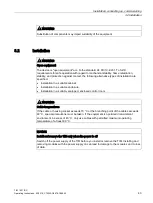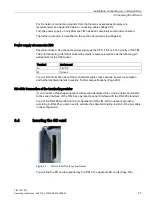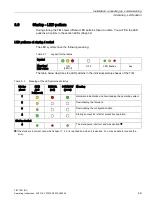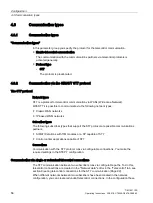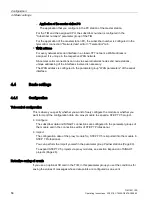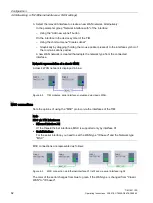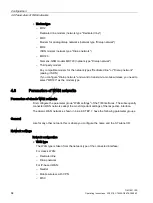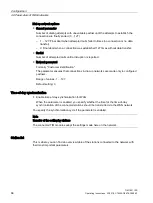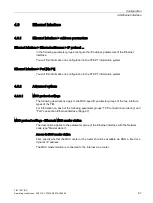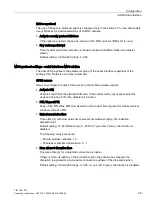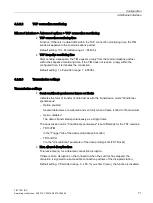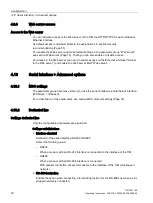
Configuration
4.3 Communication types
TIM 1531 IRC
Operating Instructions, 02/2018, C79000-G8976-C468-02
57
are displayed in the "Network data" editor. There the main and the substitute path are
specified.
To check the reachability of a communications partner of the module, you can write the
connection status to "PLC tags for partner status / path status", see section Communication
with the CPU (Page 81).
For redundant telecontrol connections, the behavior is as follows:
●
Main path
If the connection between the two subscribers is undisturbed, the main path is always
used.
The status of the main path is rechecked each time there is communication and saved in
the PLC tag.
●
Substitute path
If the connection via the main path is disturbed, communication is switched to the
substitute path.
The status of the substitute path, on the other hand, is only registered when
communication is established.
If you configure a dialup network connection as the substitute path via which generally a
connection is seldom established, you can test the reachability via this path for example
by synchronizing the time of day once daily via this path. To do this a connection must be
established once daily via the dialup network. The reachability is then updated once daily
in the PLC tag.
Addressing communications partners and network nodes
Since the communication between two ST7 subscribers can run via different paths and
subnets, precise addressing of the individual subscribers in the ST7 network is necessary.
The following two parameters serve this purpose:
●
Subscriber number
The subscriber number is unique for every subscriber in a STEP 7 project. The following
subscribers require a subscriber number:
–
TIM
Communication module for the ST7 protocol
–
CP 1243-8 IRC, CP 1542SP-1 IRC
Communication module for the ST7 protocol
–
CPU
The local CPU that is assigned to the communication module receives a subscriber
number as the end point of an ST7 connection.
With a CP and a classic TIM in the S7-300 rack, the CPU is assigned automatically to
the communication module via the rack.
With the TIM 1531 IRC and a TIM 4R-IE Stand-alone, you must assign the local CPU
manually.

